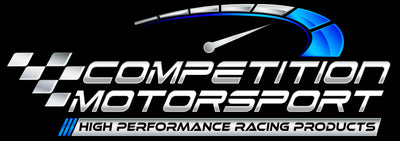So You're Wondering How to Choose a Racing Helmet
There are a lot of very good auto racing helmets made today, and it can be a bit daunting to figure out how to pick the right one. We’ve sold thousands of racing helmets and, in the process, answered a lot of questions from customers about how to choose one helmet over another. Over time many of the same questions come up.
With that in mind, we put together this guide giving you the lowdown on selecting the safest auto racing helmet that suits your needs, your style, and your budget. We’ll go over the details of helmet size, shape, safety certification, price, features, and maintenance so you have the tools you need to get the perfect helmet.
Size Does Matter
Let’s start with the first rule of helmet purchasing: size matters.
Many auto racers are wearing a helmet at least one size too large. If you’ve never had your head measured by a helmet specialist, there’s a good chance you’re among them. Even if you’ve measured your own head or had a friend measure it for you, there’s a reasonable chance your helmet isn’t properly fitted.

In order to measure your head correctly, you should use a cloth measuring tape (often called a dressmaker's tape) or a string wrapped snuggly around your head. Starting just above your brow, go around the widest part of back of your head and return to the starting spot above your brow. Take a similar measurement three or four times, adjusting the angle of the tape up or down a little (about 1/8” or 3mm) as it circles around the back of your head. Using the largest measurement, measure again to duplicate it. This is the final measurement to use in sizing your helmet.
Proper helmet fitment comprises all five of the following:
- Firm, even pressure all the way around the widest part of your head (where you measured above).
- No uncomfortable pressure points.
- No gaps in pressure (i.e. areas where the helmet doesn't make firm contact with your head).
- Pressure on your cheeks, so that moving the helmet with the chin strap fastened makes the skin on your cheeks bunch up.
- No front-to-back movement, so a gentle pull up on the back edge doesn't slide the eye port down over your brow.
One thing to remember: comfortable does not equal safe. That’s not to say that you should be uncomfortable, but we’ll dive into that in the next section.
Not Every Helmet Fits Every Head Shape
Heads come in various sizes and shapes. Most head shapes fall into one of three categories (looking at your head from the top down): Intermediate Oval (the most common), Long Oval, or Round Oval.

In this illustration, the blue ellipses represent the three common head shapes while the dashed black lines represent a Round Oval helmet. On the Intermediate- and Long-Oval head shapes, this helmet causes pressure on the front and back of the head while fitting too loosely on the sides. In the case of the Round Oval head, an Intermediate Oval helmet would pinch on the sides and fit loosely front-to-back.
This leads us to the question: “How do I find the right helmet for my head shape?” The simplest answer is to call us at (844) 438-7244 and talk to one of our experts. They are experienced in helping you find a helmet size and shape, even sight-unseen, that's very likely to fit you correctly. If you’re able to try on helmets at one of our stores, so much the better as we can make sure you're trying on the exact helmets you’re considering. Unfortunately, simply trying on one helmet won’t tell you much about other helmets, even within a certain brand. For example, trying on a Bell Sport EV won’t work if you’re planning on buying a Bell RS-7 because the head forms are completely different.
Different Brands Offer Different Fitments
That being said, different brands do tend to specialize in certain shapes, giving you a starting point for your search. Here’s a breakdown of the helmet brands we carry at Competition Motorsport (including links to each category page) and how they generally tend to fit:
Arai: Intermediate Oval to Long Oval. Round heads need not apply.
Bell: Various shapes. Bell has the largest line-up of helmets in the industry, with head forms ranging from round to long oval. The best way to pick a Bell is to call our helmet experts for help at (844) 438-7244 and let us guide you to the best-fitting models for your head shape.
HJC: Round Oval to Intermediate Oval
Schuberth: Intermediate Oval
Sparco: Round Oval to Intermediate Oval
Stilo: All shapes. Sometimes it seems like Stilo uses black magic to make their helmets. They have just one head form made using various materials and offering multiple features, yet Stilo helmets fit nearly every head shape comfortably. Stilo also offers the ability to customize the thickness of your cheek- and crown-pads, making substantial changes to the fit. Stilo's customizability is extensive, so we suggest talking with a helmet specialist at (844) 438-7244 to maximize this.
Helmet Safety Certifications
It’s important to understand that auto racing helmet certifications differ greatly from those for motorcycles, karting, and other motorsports.Auto racing helmets are designed and manufactured with safety features relevant to the risks and forces involved in auto racing. Let's take a look at the various safety certifications to help you choose the one that meets your needs.
Snell SA2020 vs. SA2025: What Racers Need to Know
For North American racers, the Snell Foundation’s SA (Special Application) helmet standards are the backbone of motorsport safety compliance. While FIA certifications dominate global series, most U.S. and club-level organizations—SCCA, NASA, IMSA’s grassroots divisions, and many track-day programs—rely on Snell’s SA ratings. With the release of the new Snell SA2025 standard, it’s worth understanding how it differs from the outgoing SA2020 and what that means for your next helmet purchase.
The Legacy of SA2020
The Snell SA2020 standard has been the foundation of racing helmet safety for the past five years. It introduced refined impact attenuation tests, improved fire resistance, and updated chin bar energy management—all designed to protect drivers in high-speed, high-G impacts typical of motorsport crashes. SA2020 helmets were also required to pass stricter rollbar impact and shell penetration tests than their predecessors, resulting in stronger outer shells and better protection for frontal and side impacts.
For many racers, SA2020 helmets—especially those that also carried FIA 8859-2015 certification—offered a near-professional level of protection at a more accessible price point.
What’s New in SA2025
The Snell SA2025 standard raises the bar once again, focusing on new impact profiles that more closely simulate modern race car accidents. One of the biggest changes is the inclusion of more advanced rotational acceleration testing, reflecting growing concern about concussion-related injuries. Shells and liners are now tested against more oblique impact angles, ensuring better energy dissipation during glancing blows.
Additionally, the SA2025 protocol includes tighter requirements for visor retention and chin strap integrity, as well as enhanced fire resistance testing aligned with FIA standards. Many manufacturers are using lighter, more advanced composites—like carbon and carbon/Kevlar blends—to meet these stricter criteria without adding weight.
Interchangeability and Expiration
Just like previous generations, SA2020 helmets remain legal in most series for at least five years after the release of SA2025, meaning competitors can continue to use them through roughly 2030 (depending on the organization). However, drivers purchasing new helmets today should absolutely opt for SA2025 certification to maximize safety, regulatory compliance, and longevity. Sanctioning bodies will begin phasing out SA2020 helmets as early as 2027.
The Bottom Line
If you’re racing at the club, endurance, or HPDE level, both SA2020 and SA2025 helmets deliver robust, fire-resistant protection designed for the realities of race car interiors. But the SA2025 standard represents the most advanced Snell certification yet—offering superior rotational impact protection, refined fitment testing, and extended future legality. For racers serious about safety and performance, upgrading to an SA2025 helmet is the smart move heading into the next decade of competition.
Understanding FIA Auto Racing Helmet Standards
In professional and amateur motorsport, the Fédération Internationale de l’Automobile (FIA) sets the global benchmark for helmet safety with a series of homologation standards that evolve alongside advances in materials, design, and testing. Understanding these standards—FIA 8859-2015, FIA 8859-2024, FIA 8860-2018, and FIA 8860-2018-ABP—helps racers choose the right protection level for their discipline, sanctioning body, and budget.
FIA 8859-2015 vs. FIA 8859-2024: The Evolution of Club-Level Safety
The FIA 8859-2015 standard replaced older Snell-type certifications in much of international racing, bringing stricter requirements for impact absorption, penetration resistance, and visor retention. Its 2024 successor, FIA 8859-2024, builds on that foundation with enhanced protection against rotational forces and more stringent energy attenuation testing. For most club and semi-professional drivers, helmets certified to 8859-2024 represent the best balance between cost, comfort, and cutting-edge safety—now often including features once reserved for top-tier designs, like advanced carbon composites and improved fire resistance.
FIA 8860-2018: The Professional Benchmark
FIA 8860-2018 helmets are the gold standard in professional motorsport, from Formula 1 to IMSA. The testing protocol for this certification is significantly more severe—nearly double the energy levels used in 8859 tests—and includes tests for ballistic penetration resistance, higher-speed impacts, and extended fire exposure. 8860-2018 helmets typically feature aerospace-grade carbon fiber shells, multi-density energy-absorbing liners, and ultra-lightweight construction that minimizes fatigue without compromising protection. These helmets are mandatory in the highest levels of racing and represent the pinnacle of modern safety engineering.
FIA 8860-2018 ABP: Advanced Ballistic Protection
Introduced specifically for open-cockpit and single-seater applications, the FIA 8860-2018-ABP (Advanced Ballistic Protection) standard adds another layer of safety, literally. ABP-rated helmets undergo high-velocity projectile testing to guard against debris impacts—an evolution that came after several high-profile incidents in Formula 1 and IndyCar. These helmets are required in F1, Formula 2, and other open-wheel series, offering unmatched protection for the upper face and visor area while maintaining visibility and ventilation.
The Bottom Line
Choosing between FIA standards comes down to your racing environment, sanctioning requirements, and budget. Most track day and club racers will find FIA 8859-2024 helmets more than sufficient, while those competing in professional series or high-speed open-cockpit cars should invest in FIA 8860-2018 or 8860-2018-ABP models. Whatever your level, wearing a current FIA-rated helmet ensures compliance, confidence, and—most importantly—safety when the unexpected happens.
Why Spend $3,000 On A Helmet When There's This One For $200?
We get asked this question a lot. Like most things, it comes down to getting what you pay for. But what, specifically, are you paying for?
To start, helmet shell materials represent a trade-off between protection, weight, and cost. As the saying goes, "Strong, light, cheap: pick two." A fiberglass helmet with acceptable impact absorption is usually cheaper but heavier. Kevlar composite (typically Kevlar mixed with carbon fiber) is lighter than fiberglass with better impact absorption, but it’s more costly and harder to work with. So Kevlar composite helmets are typically lighter and more expensive than fiberglass.
At the top end, high-quality carbon fiber is lighter than Kevlar composite while offering increased impact, abrasion, and penetration protection. It's more expensive than Kevlar or fiberglass, and requires more precise manufacturing processes. So a carbon fiber shell is the foundation of a very strong, light, safe helmet but will come with a higher price tag.
Other helmet components (foam layers, adhesives, interior padding, visor mechanisms, etc.) can have a big effect on safety, comfort, performance, and price. There’s fair range in the quality of materials – and the testing and engineering – that go into building a helmet that meets a standard versus one that significantly exceeds it. Also, generally speaking, as you go from Snell SA2025 up to FIA 8860-2018 ABP, the engineering and materials required to meet the higher standards increase the cost of your helmet.
All of that said, you don’t have to spend $3,000 to get an excellent auto racing helmet. We carry high-quality, safe, comfortable helmets at a wide range of prices, and our helmet experts are here to guide you to the best helmet for you – not just the most expensive one.
More Than Just Bells and Whistles
In addition to top-level safety, many helmet manufacturers integrate features such as communications, forced-air, driver hydration, and helmet eject systems into their helmets. These are "good to have", but not "must have" attributes that add functionality, comfort, and, in some cases, a wider margin of safety.
These integrated features make some helmets more than just safety devices. With myriad option combinations, let’s take a look at some features and when you might consider a helmet with them.
Built-In Comms
Doing track days (HPDE) and routinely have an instructor with you? Built-in comms can make life much easier. Make sure you have a few different adapter cables on-hand for the most popular in-car intercom systems such as Chatterbox or Trac-Com.
In racing, having comms is a must. Any time you’re working as part of a team, the ability to communicate info regarding flags, cautions, and pit stops becomes integral to your success. It’s equally important for the driver to communicate issues with the car back to the team.
The most popular helmet on the market for built-in comms is the Stilo ST6 GT Composite. It also comes in very lightweight carbon fiber and FIA 8860-2018 versions, all of which share the ability to integrate communications features directly into the shell. This makes plugging/unplugging comms a breeze, and leaves nothing dangling from your helmet when not in use.
Hydration and Forced Air Cooling
Overheating leads to dehydration, which contributes to a loss of reaction time and attentiveness. This can lead to bad things happening. Integrating a drink tube and/or forced air into your helmet can go a very long way in mitigating these effects, even when temperatures aren't particularly hot. Any opportunity to stay focused is an advantage you should take. Many manufacturers build hydration and/or forced air accommodations into their higher-end helmets.
Helmet Eject System
This system makes your helmet much easier to remove in an instance where you are unconscious or have possible head or neck trauma. Typically triggered by track emergency personnel, they require the emergency crew to have the appropriate tool to inflate the eject system. Check with event organizers or track operators about the availability of this equipment to their emergency crews.
Maintenance: Simply Critical
Taking care of your helmet is pretty easy, but you need to remember that not all problems are visible. Here’s a simple list of dos and don’ts to help keep your helmet safe, clean, and protected:
Don't leave your helmet sitting in the sun, even on cool or cold days. The adhesives used during manufacturing will break down over time, and prolonged exposure to sunlight will significantly speed this process up.
Do air out your helmet after each use to allow it to dry thoroughly. Bacteria from your skin will lead to mold in your helmet if you don’t dry the interior properly. To aid in this, you can purchase a helmet bag with a built-in fan like this Sparco Dry-Tech Helmet Bag or the Alpinestars Flow v3 Drying Helmet Bag. The key to properly drying your helmet interior is moving air through it; leaving it in your trunk or a closet isn’t as effective as having a dedicated helmet dryer.
Don't use cleaners that aren't designed specifically for use on racing helmets and Nomex fabrics. Most household cleaners contain detergents that can inhibit the fire-retardant properties of the materials used in your helmet. Molecule Helmet Care Kits are made especially for cleaning and refreshing your auto racing helmet.
Do check the visor hardware and HNR anchors for tightness before each use.
Don't use Windex or other ammonia-based glass cleaners to clean your helmet visor.
Do use only a visor cleaner approved by the manufacturer of your helmet. When in doubt, just use a mild soap and water.
When It's Time To Replace Your Racing Helmet
A good baseline rule of thumb is to replace your helmet when each new Snell standard is issued (every five years). Beyond five years, the materials and adhesives in any helmet can degrade significantly–and their effectiveness along with them. Spending as much time as we have with auto racing helmets, we find ourselves replacing a helmet every three to four years regardless of the apparent visual state of things. We see it as an assurance that if the day comes when we have to rely on a helmet to prevent a serious head injury, our helmet will work as intended.
On the other hand, if your helmet is dropped onto a hard surface from a height of more than 12 inches (30 cm), it must be replaced without exception. Auto helmets are designed to protect your brain from a single impact. The helmet shell and foam liner are designed to spread impact energy around the helmet as much as possible before transferring energy to your head. If your helmet takes fall from over a foot onto a hard surface (e.g., falling to the tarmac while practicing driver changes), replace the helmet.
Thank You for Reading This!
We hope you feel more confident and better informed when choosing your next auto racing helmet after reading this article. As we've said, our helmet specialists are here to help so feel free to call (844) 438-7244 and let us help you make the best choice in your most important piece of racing equipment.







